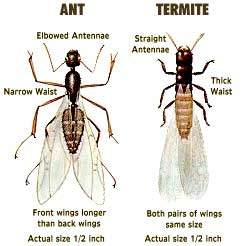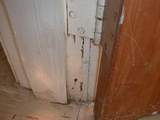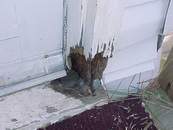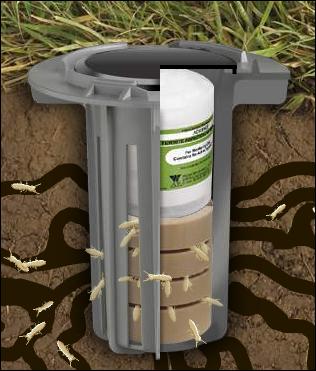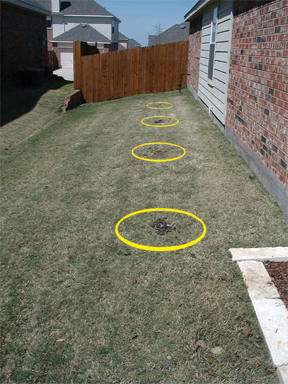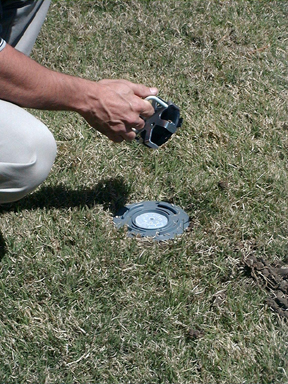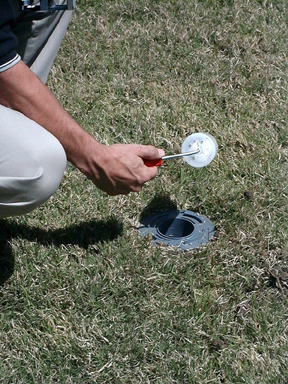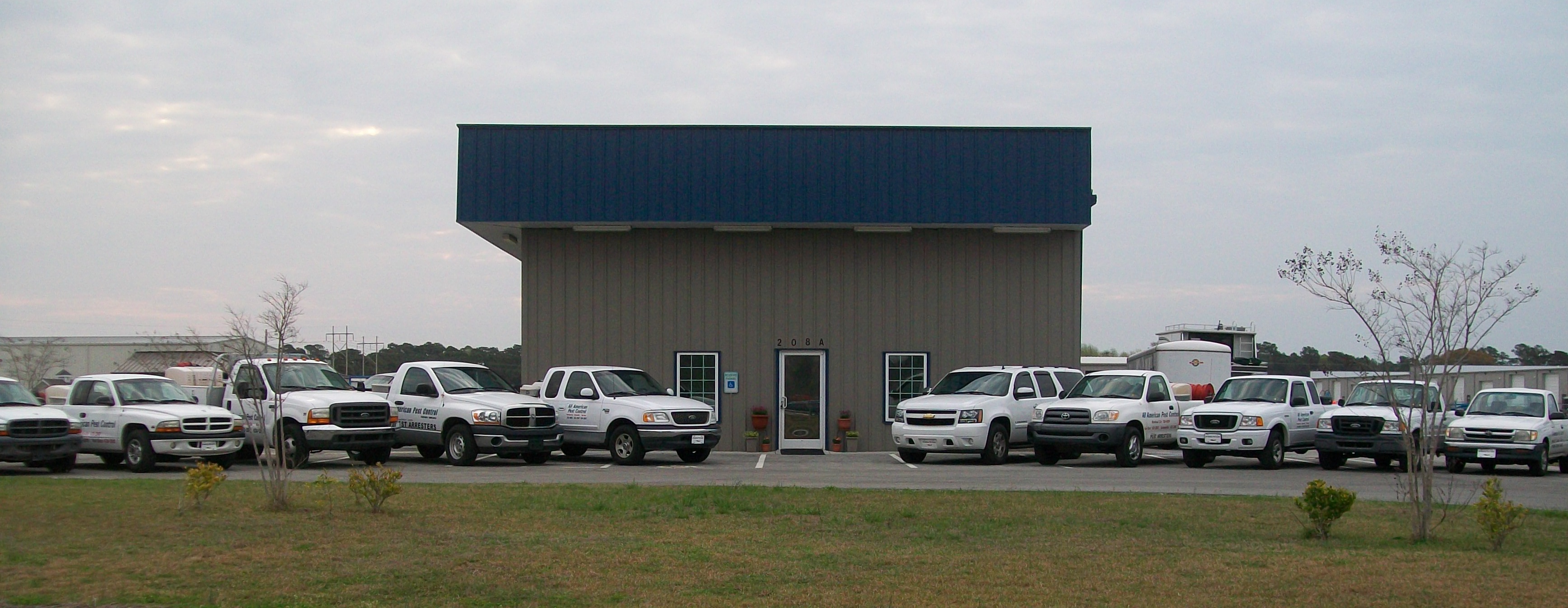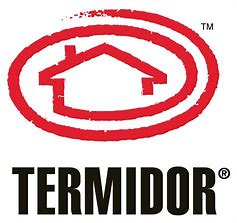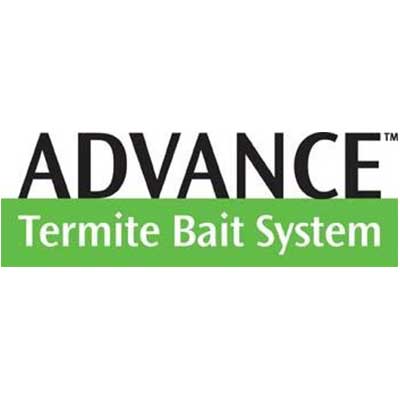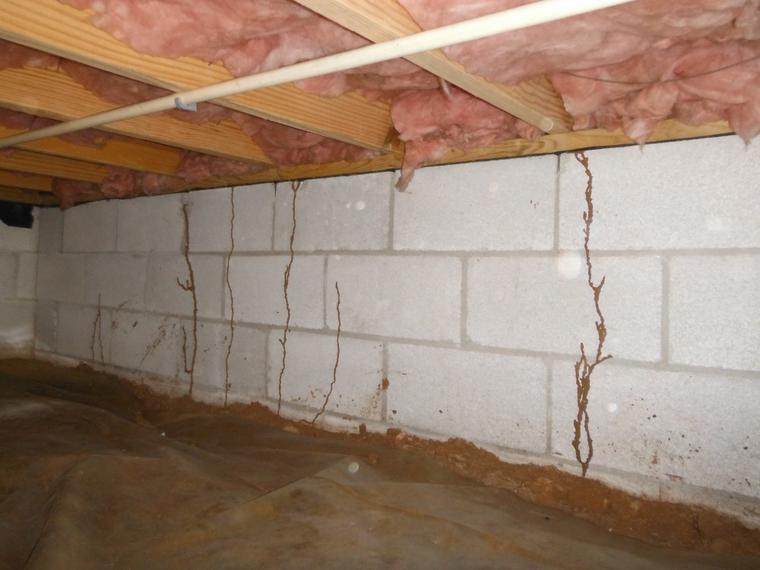 | ||||||
Termite Control
Eastern Subterranean Termites
The Eastern Subterranean termite is the most common and most widely distributed termite in North America. It is a problem for home owners from southern Ontario in Canada, south throughout the Eastern United States and as far west as Montana.
Termites feed on wood and serve an important function in nature by converting dead trees into organic matter. Unfortunately, termites don't know the difference between dead trees and the wood in your home. This native American pest feeds on such cellulose materials as structural wood, wood fixtures, paper, books, and cotton. Occasionally, it will even attack the roots of shrubs and trees A mature colony of Eastern Subterranean termites can range from a low of 20,000 to a high of 5 million workers, with an average of 300,000. The colony's queen will add 5,000 to 10,000 eggs per year to the total.
While Eastern Subterranean termite colonies are not the largest termite colonies you can find, there will often be more than
one of them working in a single building. Signs of Eastern's include dirt-colored tubes built to serve as protected paths from the earth to the wood the termites are feeding on, and the translucent wings shed by the kings and queens during swarming. Swarming usually occurs in the spring, but other, smaller swarms can occur throughout the summer and fall.
Biology
Subterranean termites are ground-inhabiting, social insects that live in colonies. A colony or nest of subterranean termites may be up to 18-20 feet below the soil surface to protect it from harsh weather conditions. Termites travel through mud tubes to reach food sources above the soil surface. The mature termite colony has three castes: a) reproductive's (king and queen), b) soldiers, and c) workers. The colony reaches its maximum size in approximately 4 to 5 years and may include 60,000 to 200,000 workers. New colonies are formed when winged males and females from a parent colony emerge in flight or swarm.
The winged reproductive's (commonly called swarmers) are dark brown to brownish black and have two pairs of equal size wings that extend well beyond the body.
Swarms are common in spring and fall, especially after a rain. After a flight, the winged males and females return to the ground and shed their wings. The wingless males and females pair up and search for sources of wood and moisture in soil. The royal couple digs a chamber in the soil near wood, enters the chamber and seals the opening. After mating, the queen starts laying eggs. The queen may live up to 25 years and lay more than 60,000 eggs in her lifetime. The eggs are yellowish white and hatch after an incubation of 50 to 60 days.
Full-grown workers are soft-bodied, wingless, blind and creamy white. In early stages, they are fed predigested food by the king and queen. Once workers are able to digest wood, they provide food for the entire colony. The workers perform all the labor in the colony such as obtaining food, feeding other caste members and immature's, excavating wood, and constructing tunnels. Workers mature within a year and live from 3 to 5 years.
Soldiers are creamy white, soft-bodied, wingless and blind. The head of the soldier is enormously elongated, brownish, hard and equipped with two jaws. Soldiers must be fed by workers because they cannot feed themselves. They are less numerous in the colony than workers and their only function is to defend the colony against invaders. Soldiers mature within a year and live up to 5 years.
Difference Between Termites and Ants
Flying ants and swarming termites are often difficult to tell apart. Termites have relatively straight, beadlike antennae while ants have elbowed antennae. Termites have two pair of wings (front and back) that are of almost equal length. Ants also have two pair of wings but there fore wings are much larger than the hind wings. The abdomen of the termite is broadly joined to the thorax while the abdomen and thorax of the ant are joined by a narrow waist called a petiole.
Feeding Habits
Subterranean termites feed exclusively on wood and wood products containing cellulose. Termites have protozoa (microorganisms) in their intestines that provide enzymes to digest cellulose. Although termites are soft-bodied insects, their hard, saw-toothed jaws work like shears and are able to bite off extremely small fragments of wood, a piece at a time. Termites often infest buildings and damage lumber, wood panels, flooring, sheetrock, wallpaper, plastics, paper products and fabric made of plant fibers. The most serious damage is the loss of structural strength. Other costly losses include attacks on flooring, carpeting, artwork, books, clothing, furniture and valuable papers. Subterranean termites do not attack live trees.
-An average Eastern Sub termite colony can consume 5 grams of wood per day, the equivalent of 2 1/3 linear feet of a 2'x4' pine board annually.
-Colony growth is slow, and it may take years before swarmers are produced.
-Eastern Sub termites can enter buildings through cracks less than 1/16" wide.
-The termite colony is made up of different types (castes) of termites - each with separate work responsibilities.
-Although Eastern Sub termite colonies are largely located in the ground below the frost line, secondary colonies can exist above ground,and examples of true above ground colonies existing without any ground contact have been seen. However, such above ground colonies have access to moisture and often the source is a roof or plumbing leak.
-Eastern Sub termites will often build mud tubes for travel between their colonies and their food sources.
-The king and queen in a colony can live for 10 to 30 years, while workers live for about two years
Evidence of Termite Infestations
-Wood damaged by termites always has remains of mud tubes attached to wood galleries or tunnels in an irregular pattern.The tunnels may contain broken mud particles with fecal materials. In the case of an active colony, white termites may be found in infested wood.
-The presence of flying winged males, females or their shed wings inside the building indicates an infestation
-The presence of mud or shelter tubes extending from the ground to woodwork or on foundation walls also may indicate infestation. Workers travel periodically via shelter tubes to their nest to regain moisture and perform
feeding duties. Each mud tube is approximately the diameter of a lead pencil.
How Old is the Damage?
Based on normal feeding activity, it takes 3 to 8 years to cause appreciable damage. There have been some predictions that, under ideal conditions, a termite colony of 60,000 workers may consume a one-foot length of 2" x 4" pine in 118 to 157 days.
Inspection for Subterranean Termites
Termite damage may be located by probing wood with a screwdriver, ice pick or knife. Start inspection in the basement and use a bright flashlight. Look for mud tubes and the activity of swarms. If necessary, get help from a professional pest control operator or advice from an experienced entomologist. A qualified professional inspector should inspect the exterior and interior surfaces of the foundation, particularly construction where wood is on or near the soil. Mud tubes are solid evidence of termite activity. Other sites requiring inspection are: a) wood construction in basement and crawl space (if present); b) sills, joists, support posts, basement window frames, wood under porches; c) hollow blocks, cracks in cement or brick construction and expansion joints; and d) scrap wood on ground, old tree stumps, fence posts and exterior frames of basement windows. The inspector should be able to determine if termites are active or not, how old the damage may be, and if chemical treatment is necessary.
Useful Information If Termite Treatment is Necessary
1. Do not panic. There is no need to be alarmed if termite activity is found in your home and treatment is necessary.
Do not panic. There is no need to be alarmed if termite activity is found in your home and treatment is necessary. Termites work slowly and the structure will not be extensively damaged or collapse overnight.
Termites work slowly and the structure will not be extensively damaged or collapse overnight.
2. Take your time to make a sound decision. Do not allow anyone to force you to make quick decisions. It is important
Take your time to make a sound decision. Do not allow anyone to force you to make quick decisions. It is important  to request the plan of work revealing sites of termite activity and treatment procedures. Ask for written information on chemical treatment procedures, repair of woodwork, warranties, copies of insecticide labels and other pertinent information.
to request the plan of work revealing sites of termite activity and treatment procedures. Ask for written information on chemical treatment procedures, repair of woodwork, warranties, copies of insecticide labels and other pertinent information.
3. Beware these situations:
Beware these situations:
-Someone says that a structure will be treated with a secret chemical formula only they have access too. Generally all companies have access to the same chemicals. The big difference is in the service
all companies have access to the same chemicals. The big difference is in the service
Termite Control
All American Pest Control recommends certain treatment techniques based on your home’s construction type. After a thorough inspection of your home, All American Pest Control will recommend a treatment method to help protect your biggest investment. If termites happen to return following your treatment, All American Pest Control promises to re-treat the problem at no additional fee to you.
Liquid Barrier
The goal is to establish a continuous insecticide barrier between the termite colony (usually in the soil) and wood in a building. Sometimes there may be a secondary termite colony above the soil (in the roof or other areas with a constant moisture supply) that requires additional treatment. Liquid barriers may be established during or after building construction. In an existing building, termite treatments may involve any of the following procedures: a) mechanical alterations, and/or b) use of an termiticide to treat the soil, foundation and wood. With liquids, pest control professionals must drill your foundation in most cases, working inside your home/basement. Treatments can take 4-8 hours and sometimes longer. Liquid applications often need to be re-applied every 5-7 years and only termites who come in contact with the liquid are eliminated.Termite treatments should always be performed by a licensed, trained, or certified person. Generally, termite treatment requires special tools such as hammer drills, sub-slab injectors, rodding devices, engines equipped with pumps, protective equipment, etc.
Advance Termite Bait Stations (ATBS)
This approach involves installing termite bait stations around the perimeter of a home flush with the ground, often hidden in your landscaping so they are much less intrusive.The stations can only be opened using a special tool and are then checked on a regular basis by the pest management professional. Upon finding termites in the stations, a bait cartridge is placed inside the station which is fed upon by termites.ATBS eliminates the entire colony because the active ingredient is carried back to the nest. With proper maintenance, ATBS will protect your home indefinitely.
"Call today for your free inspection!"
Schedule Your Service
Call now to speak with a live representative
252-726-8899 Morehead City
252-504-3200 Beaufort
910-455-2847 Jacksonville
252-634-2847 New Bern
or click here to submit a request form and we will contact you.
All American Pest Control
